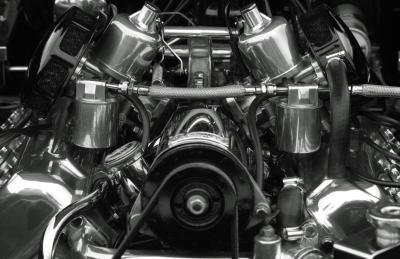
The Honda P28 ECU is the electronic control unit that was included in Honda Civic SI and EX automobiles from 1992 to 1995. It is an OBD-1 ECU, meaning that it is an older model from the second generation of ECUs that Honda rolled out after introducing its first batch of ECUs in the late 1980s. Reconditioned and third-party P28 ECUs are available from used-parts dealers and private sellers. If you can only obtain a P28 ECU for an automatic transmission but your Honda Civic has a five-speed manual, you need to modify your ECU.
Remove the plastic panel located under the front passenger side footwell to reveal the ECU. Look for screws that hold the panel and remove them if you are unable to slide the panel out.
Press the plastic clip on the ECU connector and pull the three connecting tabs out of the ECU harness and pull the ECU out of the car frame.
Remove the three screws that hold the ECU cover plate to the ECU with a Phillips-head screwdriver. Lift any auxiliary circuit boards off the top of the ECU so that you can access the main ECU circuit board.
Hold the ECU so that the writing and numbers on all chips and open board spaces are in proper reading position. Locate the row of resistors at the bottom of the board that is labeled with the letters "RP" followed by a one- or two-digit number, such as RP3, RP4 or RP8.
Locate the "RP17" resistor; it is the sixth resistor from the left of the row or the fifth resistor from the right. Clip its leads with a wire clipper or small pair of scissors and lift the resistor out of its slot. Dispose of the resistor.
Remove the "RP18" resistor that is located to the left of the "RP17" resistor by clipping its leads.
Turn your soldering iron on and wait for a minute or two until its tip is fully heated. Place a length of desoldering wick over any of the resistor holes that are blocked by old solder and heat it with the soldering iron to remove the old solder. Repeat for all blocked holes.
Thread one lead of a 0-ohm resistor or one exposed end of a 1/2-inch length of copper wire into one hole of the "RP18" resistor slot. Apply liquid flux to the hole and wire as recommended by the product directions. Solder the lead or wire to the ECU board using resin core solder.
Thread the other lead of the resistor into the remaining hole in the "RP18" slot and solder it, or solder the other end of the length of wire to the hole in the "RP17" slot next to it.
Allow the solder to settle and harden for a minute before you replace any auxiliary circuit boards and screw the top plate of the ECU back onto the unit.
Reattach the three leads of the ECU to its harness and reseat the ECU in the well under the front passenger seat. Drive the car for 10 minutes or so on a quiet road or in a parking lot and test the ECU by shifting gears and making sure your car responds properly.
Check to make sure you properly completed all steps or replace the new resistor (if you used one) if you experience any problems while driving. Replace the ECU if you are unable to achieve proper results after you modify it.